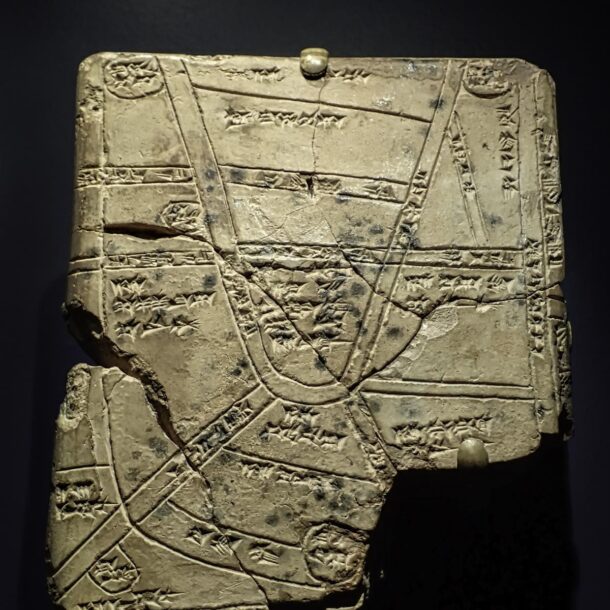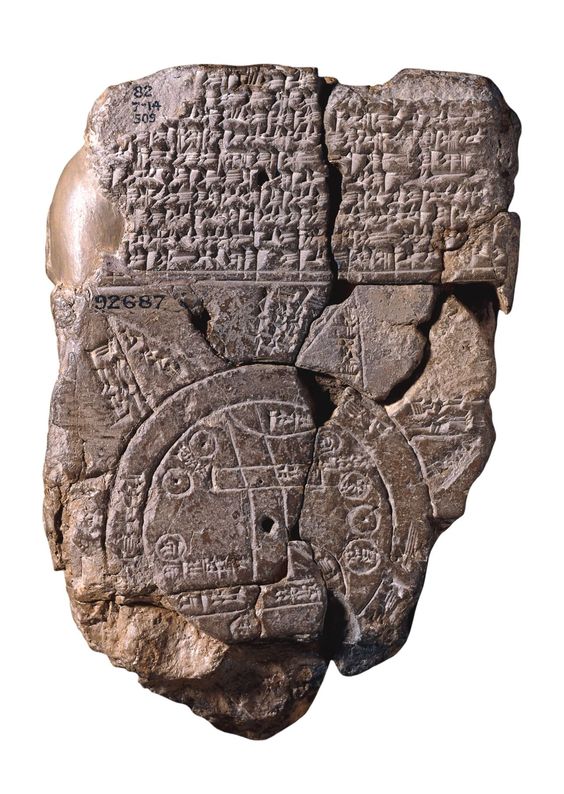Well you all seemed to like yesterday’s map almost as much as I did, so here’s another one. This one though is a much closer view. It’s a map of land close to the city of Nippur in the Kassite period (1550-1450 BC). The parallel lines mark out the ditches and canals of an irrigated landscape, and the circles represent settlements. By the time this map was created, Nippur had been continuously occupied for more than three millennia, and would remain occupied for almost three more, before it was finally abandoned in the early 1200s AD.
The story of Nippur is the story of religion. It began as a settlement in a swamp, prone to being wiped out by fires and floods, but for some reason the people were drawn back to rebuild on the same spot over and over. Eventually, accretion of the detritus of occupation began to raise the settlement above the surrounding marshland. The early archaeological strata show evidence of cremations, so the later city was built on the ruined homes and ashes of its ancestral occupants. What rituals these early occupants might have had is lost forever, but in time the mud bricks became writing surfaces and we begin to be able to observe the growth of their religion in the marks they left behind.
We’ve mentioned Nippur before. It’s where Nanna went to meet Enlil and fetch wild beasts, honey and wine to take back to his city of Ur. In this early world, populated only by the gods, Nippur was a popular travel destination with Enki also paying a visit from his home at Eridu. Enlil was one of the triumvirate of top gods, Lord Wind, and from 2600 BC his city of Nippur was far and away the most important centre of religion in Sumer. It was never the capital of an empire but control over Nippur was long seen as a legitimising the rule of Sumerian kings.
At the time today’s map was drawn the Kassites had recently come to power, ruling from their capital at Babylon. Lord Wind’s hold on Mesopotamia was beginning to wane as the city god of Babylon began his ascendency. Marduk, supreme god of the Babylonians had arrived, and with Nippur falling under control of the Babylonians, Enlil had competition. We can see concrete evidence of this in the map itself. One of the estates and fields is named “field of Marduk”, marking a firm foothold for the usurper inside the territory of Enlil.
Nevertheless, despite never being a centre of political power, the presence of Enlil meant that Nippur would remain an important city as long as he remained an important god. Even the Babylonian rulers, long after the fall of the Sumerian kings and the rise of Marduk, would make the journey to Nippur to legitimise their reign.
Eventually though, the name of Enlil would lose its meaning. His temple was built over by a fortress in the Seleucid period, and again by the Parthians. With the arrival of these cultures, the Greek gods Zeus, Athena, Apollo, and Artemis supplanted the Mesopotamian pantheon. And by the time Christianity and Islam and arrived with their one God, Enlil’s name was lost deep inside the hill along with the ashes and ruins of earlier civilisations.

